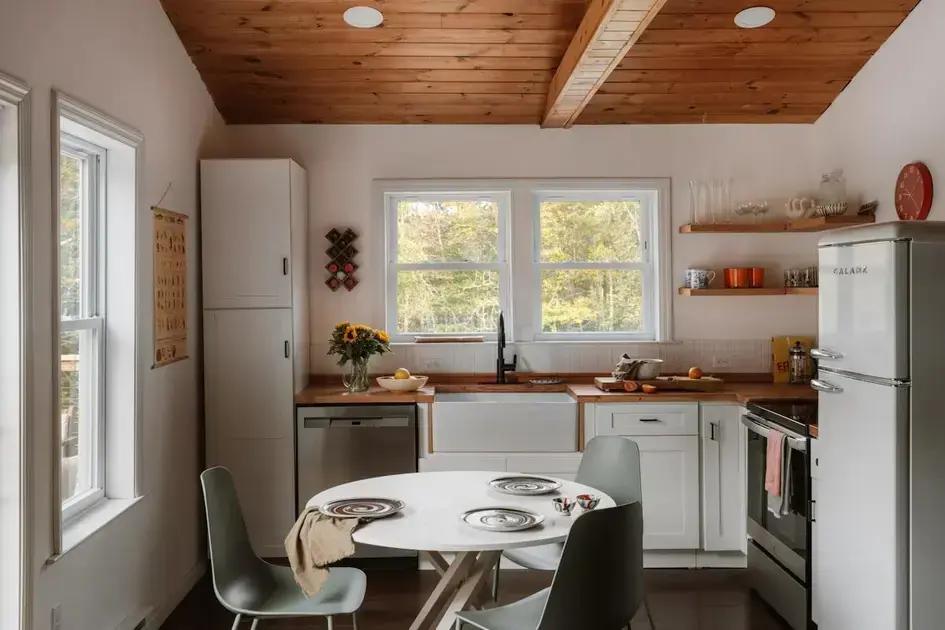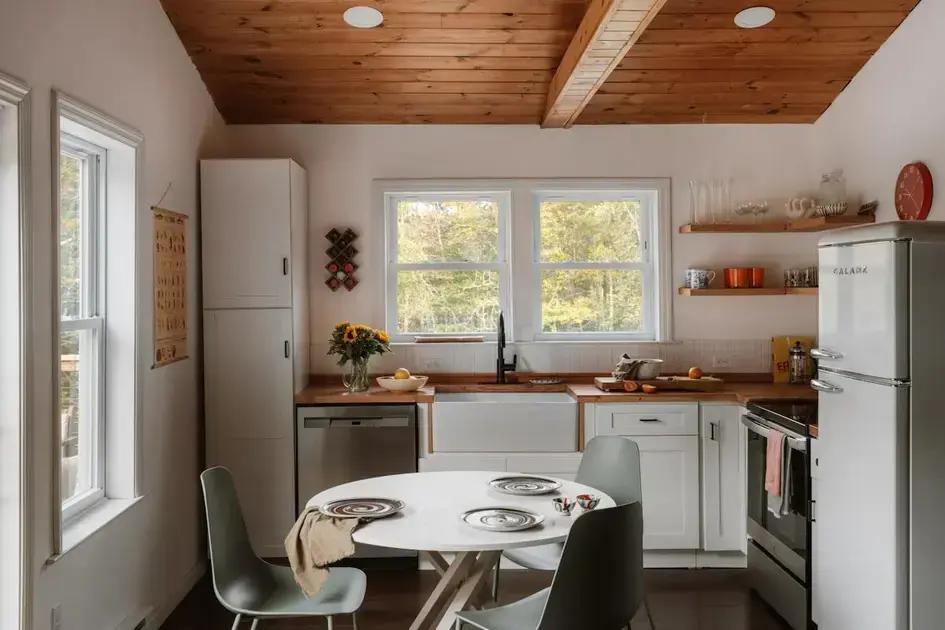Mindfulness and visualization are powerful techniques that enhance mental well-being by promoting relaxation, focus, and clarity of goals, making them essential practices for reducing stress and improving emotional health.
Ever felt overwhelmed by life? Mindfulness is your key to reconnecting with the present and reducing stress—let’s explore how it can transform your daily life.
Jump to section
What is mindfulness and how can it help you live a better life?
Mindfulness is the practice of being fully present and engaged in the moment, without judgment. It encourages you to observe your thoughts, feelings, and sensations with open curiosity. This practice can lead to greater emotional balance and a deeper understanding of yourself.
How can mindfulness improve your life?
Research shows that the regular practice of mindfulness can help reduce stress, anxiety, and depression. One study by the National Institutes of Health found that mindfulness-based therapy can decrease anxiety disorders by about 30%.
- Enhances focus: Mindfulness helps improve concentration by training your brain to stay engaged with the task at hand.
- Increases awareness: By being more present, you develop a heightened awareness of your surroundings and emotions, leading to better decision-making.
- Boosts resilience: Mindfulness equips you with coping strategies, making it easier to navigate life’s challenges.
Incorporating mindfulness into your daily routine can bring profound benefits. Simple practices like mindful breathing or observing nature can shift your perspective and enhance your quality of life.
How to be mindful in your everyday life
Being mindful in your everyday life means paying attention to the present moment. Here are some simple ways to make mindfulness a habit:
Start your day with intention
- Practice mindful breathing: Take a few deep breaths before getting out of bed. Focus on your breath to center yourself.
- Set daily intentions: Decide what you want to focus on for the day, whether it’s being more positive or staying present.
Incorporate mindfulness throughout your day
- Mindful eating: Slow down and savor each bite. Notice the flavors, textures, and sensations as you eat.
- Take mindful breaks: Step away from your tasks regularly. Stretch, breathe, or take a short walk outside to refresh your mind.
- Use reminders: Set alerts on your phone to pause and check in with yourself a few times a day.
Practice gratitude
At the end of each day, reflect on three things you’re grateful for. This simple practice can shift your focus to the positive aspects of your life.
The benefits of mindfulness

Mindfulness offers many benefits that can improve your overall well-being. Here’s how practicing mindfulness can transform your life:
Reduces stress and anxiety
Regular mindfulness practice can lower cortisol levels, the stress hormone. A study from Johns Hopkins University found mindfulness meditation programs can significantly decrease anxiety symptoms.
Improves focus and concentration
Mindfulness trains your brain to focus on the present moment. Research indicates that mindfulness can enhance attention span and memory retention, making it easier to concentrate on tasks.
Enhances emotional health
Mindfulness can lead to greater emotional resilience. Studies show that it can decrease depression and improve mood by promoting a positive outlook on life.
Promotes better relationships
By developing empathy and compassion, mindfulness can enhance your relationships with others. Being more present and attentive leads to deeper connections and understanding.
Encourages healthier habits
Practicing mindfulness can also support healthier lifestyle choices. Increased self-awareness can lead to better eating habits, regular exercise, and improved sleep quality.
How to meditate for beginners
Meditation is a powerful tool to help you find calm and clarity. Here’s how to get started, even if you’re a beginner.
Find a quiet space
Choose a place where you won’t be disturbed. This could be a room in your home or an outdoor setting. Make sure it’s comfortable and quiet.
Choose a comfortable position
You can sit on a chair, cushion, or even lie down. Just ensure your position is comfortable enough to stay relaxed throughout the session.
Start with short sessions
If you’re just starting, aim for just five minutes of meditation. You can gradually increase the time as you get more comfortable with the practice.
Focus on your breath
Close your eyes and pay attention to your breathing. Notice how the air feels as it enters and leaves your body. If your mind wanders, gently bring your focus back to your breath.
Use a guided meditation
Consider using apps or online resources that offer guided meditations. These can help you stay focused and provide a structured approach.
Be kind to yourself
Don’t worry if your mind drifts. It’s natural. Acknowledge your thoughts and gently return your focus to your breath without judgment.
Mindfulness exercises you can do every day
Daily mindfulness exercises can help you incorporate mindfulness into your routine. Here are some simple practices you can do every day:
Mindful breathing
Take five minutes to focus solely on your breath. Inhale deeply through your nose, hold for a moment, and exhale slowly through your mouth. Repeat this process, noticing the sensations of your breath.
Body scan meditation
Lie down comfortably and close your eyes. Start at your toes and gradually move your awareness up your body. Notice any sensations or tension, and consciously relax each part as you go.
Gratitude journaling
Every evening, write down three things you’re grateful for. This practice shifts your focus to the positive aspects of your day and encourages a mindful outlook on life.
Mindful walking
Take a short walk and focus on the sensations of walking. Pay attention to your feet touching the ground, the air on your skin, and the sounds around you.
Eating mindfully
During meals, slow down and pay attention to each bite. Notice the flavors, textures, and smells of your food. Try to eliminate distractions, like screens, while you eat.
Five-senses exercise
Take a moment to notice your surroundings. Identify five things you can see, four you can touch, three you can hear, two you can smell, and one you can taste. This exercise grounds you in the present moment.
Mindfulness and visualization

Mindfulness and visualization go hand in hand to enhance your mental well-being. These techniques can help you focus, relax, and achieve your goals.
What is visualization?
Visualization involves creating mental images to manifest your desires or goals. It’s a tool to help you picture success and enhance motivation.
How mindfulness enhances visualization
Practicing mindfulness clears your mind, allowing you to visualize more effectively. It helps you stay present and focused on your mental imagery.
Steps for mindful visualization
- Find a quiet space: Choose a comfortable environment where you won’t be disturbed.
- Practice mindful breathing: Take a few deep breaths to center yourself before starting.
- Set your intention: Decide what you want to visualize. Whether it’s personal success or a peaceful scene, be specific.
- Visualize with detail: Close your eyes and create a vivid mental picture. Include sights, sounds, and feelings to make it more immersive.
- Stay present: If your mind wanders, gently bring it back to your visualization. This will strengthen your ability to focus.
- Reflect: After the session, take a moment to reflect on how it felt to visualize your intention.
Benefits of combining mindfulness and visualization
- Improved clarity of goals and desires
- Reduced stress and anxiety by focusing the mind
- Enhanced motivation and confidence in pursuing your goals
- Greater emotional resilience through positive imagery
Wrapping up
Mindfulness and visualization are effective ways to enhance your well-being. By focusing on your breath and creating clear mental images, you can reduce stress and clarify your goals.
Remember, it’s all about taking small steps. Regular practice can help you feel more centered and optimistic about life.
As you explore these techniques, take a moment to think: What visualization or mindfulness practice can you try today to bring a little more peace into your life?






